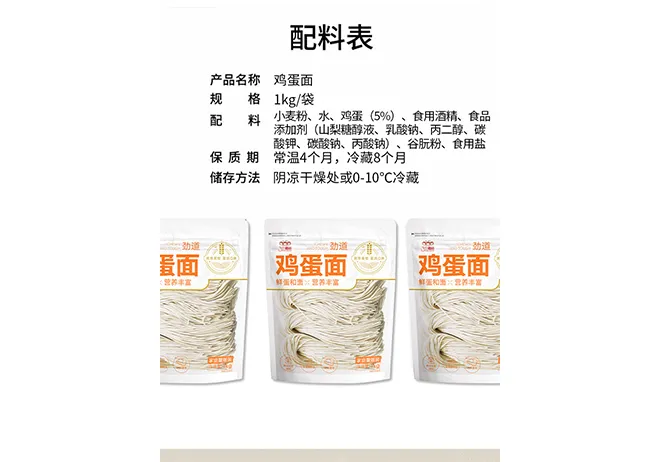dried udon noodles
The Culinary Versatility of Dried Udon Noodles
Udon noodles, with their thick, chewy texture and versatility in the kitchen, have long been a staple in Japanese cuisine. When dried, these noodles become even more accessible, allowing home cooks and chefs alike to create authentic udon dishes without the need for reaching into the depths of culinary tradition. This article explores the characteristics, preparation, and various uses of dried udon noodles, showcasing why they should be a pantry staple for anyone who loves Asian cuisine.
Characteristics of Dried Udon Noodles
Dried udon noodles are typically made from wheat flour, water, and salt. Unlike their fresh counterparts, these noodles undergo a dehydration process, which gives them a longer shelf life without sacrificing taste or texture. When cooked, dried udon noodles expand and regain their original robust chewiness, making them a delightful addition to any dish. They come in various thicknesses, although the traditional udon is about 6mm wide.
One of the most appealing aspects of dried udon is its ability to absorb flavors from the broth and ingredients with which it is cooked. This quality allows for the creation of rich, hearty soups or lighter, more refreshing dishes, depending on the culinary direction one wishes to take.
Preparing Dried Udon Noodles
Cooking with dried udon is incredibly simple, making it an excellent option for quick meals. The first step is to boil the noodles in water. Typically, a cooking time of around 8-12 minutes is sufficient, depending on the brand and thickness of the noodles. It’s essential to stir them occasionally to prevent sticking. Once they are al dente, drain and rinse the noodles under cold water to halt the cooking process and remove excess starch.
dried udon noodles

Dried udon can be used in various dishes, both hot and cold. For a classic presentation, one might prepare kitsune udon, where the noodles are served in a savory dashi broth topped with sweet fried tofu and green onions. Alternatively, a noodle stir-fry featuring seasonal vegetables and protein such as chicken or tofu can be a quick yet satisfying meal.
Culinary Uses of Dried Udon Noodles
The versatility of dried udon noodles is truly remarkable. Beyond traditional Japanese recipes, they can be adapted into various international dishes. For instance, a udon noodle salad with a peanut or sesame dressing can bring a unique twist to lunch menus, blending Asian flavors with Mediterranean influences. With their ability to hold sauces well, they can also be incorporated into pasta-like dishes, such as udon carbonara, where they can soak up a rich, creamy sauce.
In addition, dried udon noodles can be used in soups, where they absorb the flavors of the broth while providing a satisfying texture. A spicy kimchi udon soup can warm the soul on a cold day, while a lighter, ginger-infused broth can refresh the palate during the summer months.
Conclusion
In conclusion, dried udon noodles are an essential ingredient for anyone looking to explore the world of Asian cuisine at home. Their unique texture, quick cooking time, and adaptable nature make them perfect for a wide range of dishes. Whether you're enjoying a comforting bowl of udon soup or experimenting with fusion recipes, these noodles offer endless possibilities in the kitchen. So, why not stock your pantry with dried udon and embark on a culinary journey that bridges tradition and innovation?
-
Unleash Your Inner Chef with Delectable Italian Pasta CreationsNewsAug.01,2025
-
Savor Health and Flavor: Irresistible Soba Noodles for Sale Await!NewsAug.01,2025
-
Nourish Your Body with Premium Organic Ramen - A Culinary Delight AwaitsNewsAug.01,2025
-
Elevate Your Dishes with Our Exquisite Kinds of Egg NoodlesNewsAug.01,2025
-
Dive into Flavorful Convenience with Our Ramen OfferingsNewsAug.01,2025
-
Discover Exquisite Types of Naengmyeon and Chilled Soba NoodlesNewsAug.01,2025
-
Is Whole Wheat Pasta Healthy?NewsMay.30,2025
Browse qua the following product new the we

















































































































